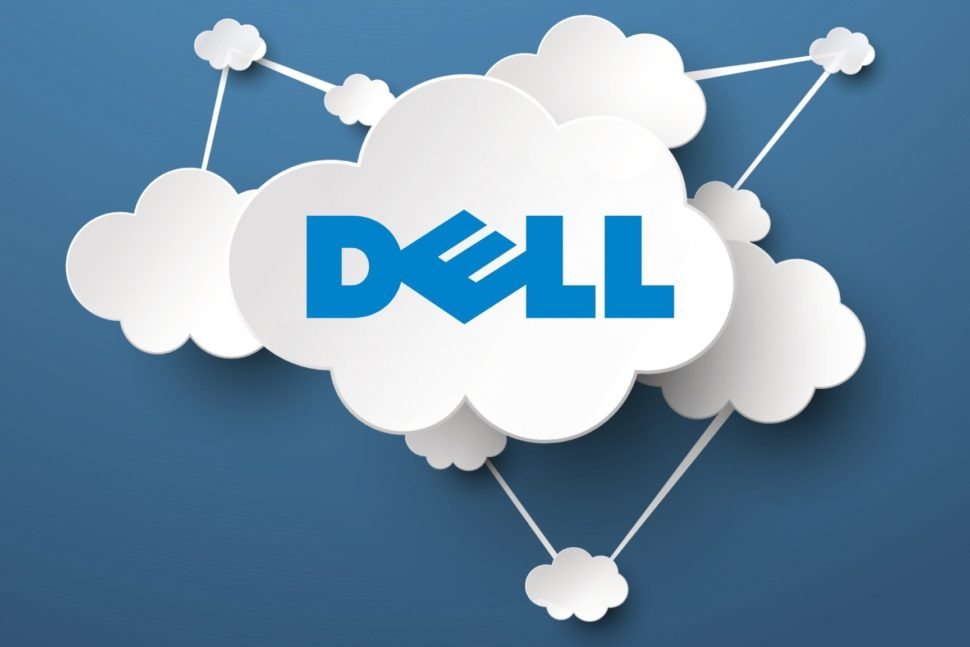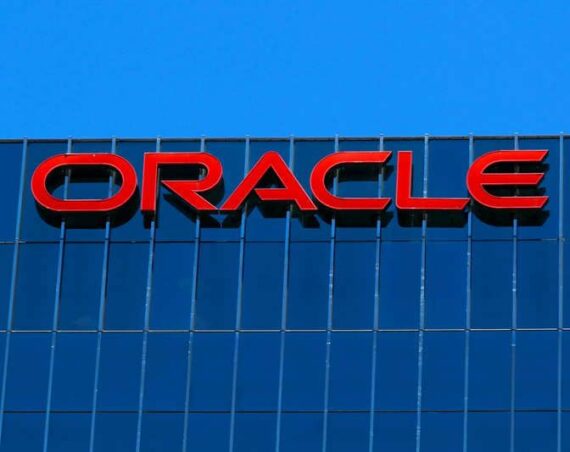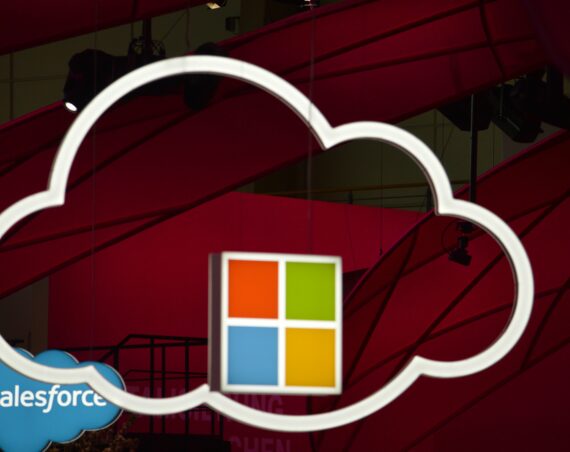
Dell Technologies wants to give you a consistent user experience across the cloud and your data center, and it’s leveraging its controlling stake in VMware to do it.
One of the biggest announcements at Dell Technologies World in Las Vegas this week was a new service that brings the user experience for buying, installing, and using new servers on-premises as close as it can be to spinning up a VM in the cloud. Through a web portal, a data center manager selects location, specs, and number of servers they need, which kicks off the process of preparing the hardware for shipping and installing it in one or several data centers of the customer’s choice.
Once installed, the infrastructure is fully managed by VMware, while the customer pays subscription fees for as long as they use it – the same way they pay for public cloud infrastructure. The shift of compute infrastructure costs from CapEx to OpEx is one of the biggest things companies like about public cloud, and Dell and VMware are enabling a similar model for on-premises hardware.
Now in beta, with expected GA launch in the second half of the year, the service isn’t for all Dell data center hardware, just for Dell EMC’s VxRail hyperconverged infrastructure. Combined with the VMware Cloud Foundation software stack, VxRail is now the basic building block of the on-premises portion of the hybrid cloud architecture Dell wants you to buy into. (The companies previewed the VMware Cloud on Dell EMC solution at last year’s VMworld as Project Dimension.)
Cloud Partnerships
The public cloud portion can be any VMware-based cloud services offered by VMware Cloud Verified partners, a list that as of this week also includes Microsoft Azure. CenturyLink, IBM Cloud, OVH, and Rackspace are also on the list, among many others.
VMware Cloud on AWS is also an option, since it’s Cloud Foundation-based, but it’s a different animal. VMware on AWS is a deeply integrated VMware-operated service running on bare-metal servers inside Amazon data centers. It was painstakingly co-engineered over a long period of time by VMware and AWS teams.
While Microsoft, Dell, and VMware mentioned in the announcement that they were considering a deeper integration in the future, for now, Azure VMware Solutions are Microsoft-developed and provided services designed by Dell subsidiary Virtustream and VMware Cloud Verified partner CloudSimple. Eventually, “we’re going to deeply partner with all cloud providers out there,” Matt Baker, senior VP of strategy and planning at Dell EMC, said during a press event in San Francisco last month.
A Cloud-Like User Experience
Predictably named Data Center-as-a-Service, Dell’s new offering gives companies an option that for many of them may not be ideal but makes for a workable compromise. “There is a need for on-premises infrastructure, and that’s not going to go away for quite a while,” Craig Lowery, a Gartner VP analyst, told Data Center Knowledge. The service “delivers on-premises infrastructure at a model that is more attractive and more aligned with what we see from the public cloud providers.”
While he hasn’t noticed that “customers have necessarily been clamoring” for on-premises hardware as a subscription service, they do prefer the on-demand model cloud offers. Most, however, aren’t in the position to shift to the cloud completely. “Customers like the idea of being able to order something on-demand, pay for what they use, and to have it as a service.”
A customer will pay per physical host per month, Dell EMC’s Baker said. He did not say what a server would cost per month.
All legacy hardware vendors, including IBM and Hewlett Packard Enterprise, have had some versions of hardware consumed as a service for data centers, but those services “have not been positioned as a headline” the way Dell is positioning its new offering. As part of the Dell Technologies Cloud group of products the company announced this week, Data Center-as-a-Service “is a first-class citizen now,” Lowery said. “They’re putting a lot behind it.”
The portal and the logistical infrastructure behind it that makes it so easy to order a server and get it installed and fully managed wherever you need is very compelling as a customer experience. “That has not existed before,” he said. “That’s new.”
The timeframe for delivering and launching a server will vary, but with a network of more than 500 depots around the world, Dell will make sure the lead time is never longer than seven days, Baker told us.
Compelling for Edge Computing
This depot infrastructure may make the service compelling for companies that are building out edge computing infrastructure in small data centers near cell towers, at manufacturing plants, or in retail stores – a group of use cases Dell’s marketing is aimed at.
In the cell-tower example, the compute infrastructure that’s being built to support 5G wireless connectivity and the applications that take advantage of it will have to be in thousands of locations. Designing a viable operating model that includes managing hardware in so many locations has been one of the biggest puzzles companies building this infrastructure, such as Packet, have been wrestling with.
Dell’s Joker Card
As of its 3.5 release, launched in November, VMware Cloud Foundation supports Kubernetes, the most popular orchestration engine for application containers. Using containers as the common platform across all the hybrid cloud end points gives Dell, with VMware’s “considerable capabilities” in the container area, a big advantage, Lowery said. The new as-a-service offering gives customers an easy way to get access to those capabilities.
Google’s recently announced Anthos hybrid cloud platform, built around Kubernetes, relies on VMware for the on-premises portion. Red Hat’s container capabilities and their application for hybrid cloud were one of the main reasons IBM thought it was worth dishing out $33 billion to acquire the open source company.
Because of VMware, Dell is in the best position to take advantage of this theme, Lowery said. “That’s the primary piece of it. They are doing much tighter integration. They’re using VMware to great effect here.”
This is happening despite VMware’s partnerships with virtually every enterprise technology vendor that matters. “It is very clear that VMware is making Dell a first-class citizen,” Lowery said.
‘Underappreciated by the Street’
At the recent San Francisco press event, Dell EMC’s Baker said Dell Technologies wanted to “reset everybody’s understanding” of the kind of company it was. Dell EMC and its reputation as an enterprise technology giant in combination with Dell’s reputation as a PC company tend to flatten the market’s perspective of the parent company, he said. “People still underestimate the full power of what Dell Technologies is.”
Dell Technologies wants to be seen as a transformative force in the enterprise, but investors don’t see it as such. “We’re really underappreciated by the Street,” Baker said.
Lowery disagreed: “I think Wall Street understands exactly what Dell is. Dell wants to be more than it appears to be, and it’s doing some things to grow to be more than it has been.” This week’s announcements are signs that it’s moving in the right direction, he added.
Dell’s portfolio of enterprise technology solutions, while unparalleled in range of capabilities, is rooted in controlling and managing infrastructure. The truly transformative companies, the hyperscale public clouds, have abstracted infrastructure away completely. Their value is in helping customers build applications, not manage infrastructure, and that’s a step outside of Dell’s core competencies, Lowery said. Much of Dell’s value is still wrapped up in managing and delivering infrastructure.
Most Gartner clients want to switch to the public cloud model, where they don’t worry about infrastructure at all, he said. It’s where they say they want to go, but they cannot get there as quickly as they’d like, which is why infrastructure-based solutions like Dell’s will continue to see demand alongside the infinitely faster-growing demand for solutions like AWS’s and Azure’s.


